Friday, Nov. 13th, 2020
Soooo Friday, the 13th, might not seem like the ideal day to be traveling to our next destination after our month long stay in Kerrville. But Gary and I aren’t typically superstitious so these things tend not to bother us. We traveled 329 miles. The bulk of it going west on I-10 then south on 67 for about 50 miles. It was a pretty ride where I-10 appeared to be cut out of the limestone hills, and mountains could be seen in the distance. It was also free of traffic thus the reason for the 80 mph speed limit, which seems a bit much to us, even if we weren’t towing. We were treated to a few fall colors, wind farms, large ranches and a whole lot of nothing! Exits were few and far between with no towns to speak of. Rather majestic in its own way. We arrived at Lost Alaskan RV Park in Alpine, Texas located near Davis Mountains State Park. One of the reasons for our visit to this part of West Texas.
We arrived mid afternoon and got set up. It was a beautiful afternoon so I sat outside for awhile until it got too windy and chilly. We went for a walk around dusk and saw deer on the other side of the fence of the campground… about 3 of them. So pretty.
We had a quiet night. This is nothing new as most of our nights are quiet.
Saturday, Nov. 14th, 2020
Today I had pre-booked tickets for the McDonald Observatory near Fort Davis, TX which is part of the University of Texas at Austin. Unfortunately with Covid the Observatory is not completely open… I was able to score tickets to the Visitors Center which has displays set up explaining how the Observatory was started… by a wealthy lifelong bachelor named W.J. McDonald who was fascinated by astronomy. When he died in 1926 he gave the bulk of his estate to UT. His family contested saying he was not of sound mind, but the courts felt otherwise and the McDonald Observatory was born. The Observatory grew over the years with two other donations. One donation of particular interest to us was given by Mrs. Violet Locke McIvor. She donated the mountain upon which now sit most of the Observatory’s telescopes. Previously called “Flat Top” or “U Up U Down Mountain” for the ranch in which it sat. It was renamed Mount Locke in honor of Mrs. McIvor’s grandfather, Dr. G. S. Locke of Concord, NH who was the founder of the “U up U Down Ranch.” Small world! All of the hands-on exhibits in the Visitors Center were roped off but there was still enough to see to make it worthwhile to visit… mask on, of course.
One of the Observatory’s lasting legacies is that in 1969 when Neil Armstrong took his first steps on the moon, he placed a special mirror on its surface. That mirror and other mirrors placed by future Apollo missions, bounced back lasers shot from the McDonald Observatory. The goal was to measure round trip travel time to the moon, and thus the precise distance. Over time, the experiment revealed that the moon is moving away from the earth at about 1.5 inches per year. It also uncovered wobbles in the Moon’s rotation among other things. These lunar laser experiments are the longest running Apollo science project, lasting more than 40 years.
A newer telescope was built in 1997 at the Observatory, one of the world’s largest. This was a combined effort between UT and Penn. State Univ. and studies lots of things that are way over my head! There have been recent scientific discoveries in 2002 and 2007 making the McDonald Observatory still extremely relevant and one of the world’s top-ranked research observatories.
The Visitor’s Center also housed the Gift Shop. Ordinarily I don’t get excited about gift shops but in this case, Gary bought me a few books, as part of a belated birthday gift, to help with our stargazing efforts. One was a Planisphere. The idea being that you hold it up to the night sky oriented North & South and it will help you to understand what you’re seeing. We’ll see how that goes! Also with one of the books came a tiny red flashlight. Also necessary for stargazing… so you’re not being blinded by white lights and then having to have your eyes re-adjust. We’ll have to put all this to the test and see how we do.
We were also able to walk around some of the outside grounds at the Observatory and see some of the smaller telescope buildings and the amphitheater where they have stargazing at night. We opted not to do a night event. First, I have a feeling it would have been already booked up. They are allowing a much smaller number of folks to take part. Secondly, it’s dark in these parts with deer running across the roads. We didn’t feel like navigating a 45 minute ride back to the campground in the dark on unfamiliar roads with possible kamikaze deer running out in front of us.
We would have liked to have heard a 45 minute talk about the larger telescopes located on Mount Locke, but that was already sold out when I made reservations several weeks ago. Before Covid, you could actually be inside of the large telescope buildings. Not now. But after visiting the Observatory’s website again recently (as I was writing this) I realized that the Visitor’s Center and everything else at the Observatory has been closed down because of the spike in covid cases. I guess we were lucky we visited when we did.
Since our McDonald Observatory tickets were for 9:00 in the morning, it was still quite early in the day. I had already reserved day passes at Davis Mountains State Park so that we could visit that next. The Davis Mountains are a range of mountains located near Fort Davis, which is where the name comes from.
I’ve talked about the Civilian Conservation Corps before, which I think was a stroke of genius created by Roosevelt. During the depression the CCC provided jobs and job skills by hiring young men to work on conservation projects. The program enrolled men between the ages of 17 and 25 who qualified for public assistance. They earned clothing, food, medical care, a place to stay while working, and $30 a month. They sent most of their pay home to their families. Why we can’t do some new updated form of that program now for our failing infrastructure is beyond me, but I digress.
Davis Mountains State Park was one of the earliest projects for the Texas CCC. Between 1933 and 1935, the CCC built many of the facilities still used in the park today. Among these is the Indian Lodge (absolutely gorgeous!), a 16-room full-service hotel, including original furnishings. New rooms were added to the lodge in the late 60’s and thankfully they are in keeping with the original design. We explored the outside of the structure extensively since it is spectacular!
Another CCC-built feature of the park is the 5-mile scenic Skyline Drive, which we drove stopping for a picnic lunch in the truck with a nice view, as it was too windy to eat outside. The road ascends via switchbacks to the top of a ridge. It ends at a stone overlook shelter with a “picture window” framing a breathtaking view. Just a gorgeous ride all the way up with great views. We rounded out our visit to Davis Mountains S.P. by visiting the Interpretive Center and checking out the campground that’s in the state park. Even though we didn’t actually do a hike, it certainly felt like it with the 3+ miles of walking and the 5,000+ elevation.
After that it was time to head back to our tiny home and call it a day!
Sunday, Nov. 15th, 2020
Today we visited historic downtown Alpine TX. It was established in the mid 1800’s and was both a frontier town and a popular stop on the Southern Pacific Railroad. Fun fact: it’s the largest city in the largest county in the largest state in the contiguous US. They must be referring to land mass because with a population of about 6,000 people, it was beyond quiet on a Sunday afternoon. Perfect time to do a self-guided walking tour and check out art galleries, historic buildings and amazing outdoor murals (over 30 of them!) that they keep adding to every year. It’s situated at 4,500 ft above sea level and you can look down many side streets and see the Davis Mountains staring back at you. A lovely vibrant historic downtown area. It’s the largest town in this part of West Texas, including Big Bend National Park area, which is about 90 miles away.
Gary did a short video of Alpine which will give you a flavor of this charming town and I’ve got photos below as well.
Monday, Nov. 16th, 2020
On our last day in this area we visited the Chihuahuan Desert Nature Center. The Chihuahuan Desert at 194,000 sq. miles is the largest desert in North America. It occupies much of West Texas, the Rio Grande Valley in South Texas and reaches into New Mexico, Arizona, and parts of Mexico. The Nature Center offered hiking trails, a botanical garden (which was a bit past peak this time of year) and a fabulous cactus greenhouse. The cactus greenhouse was our favorite with many cacti from the Mexican portion of the Chihuahuan Desert. Most of the Mexican species wouldn’t survive here outside of the greenhouse environment. Very cool cacti that we’ve never seen before! Luckily I didn’t notice the mouse/rat traps on the ground in the greenhouse until we were almost done. I feel sorry for the person who has the job of checking that out every morning. Euuuuwwwww.
The rest of the day was taken up with making some future campground reservations, and stocking up on groceries and fuel. While there isn’t much in the way of grocery stores here, as evidenced by the $6 price for a half gallon of milk, there’s even less in the Big Bend National Park area where we are headed tomorrow!

















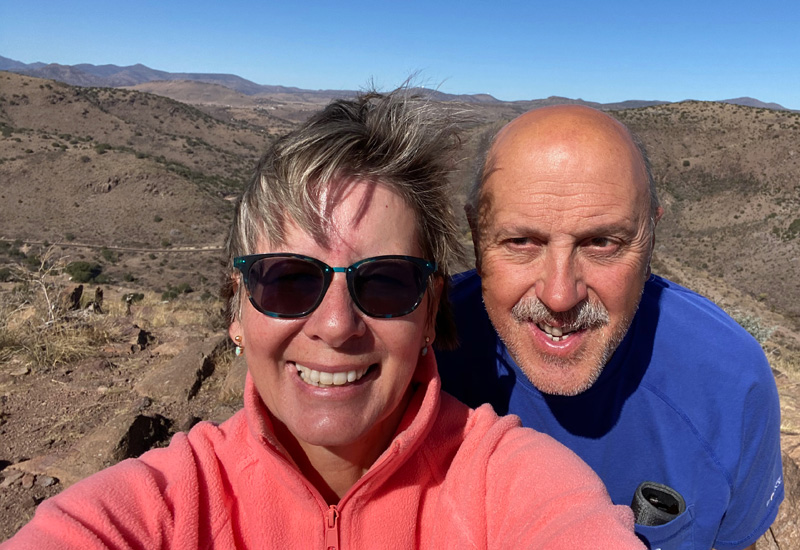





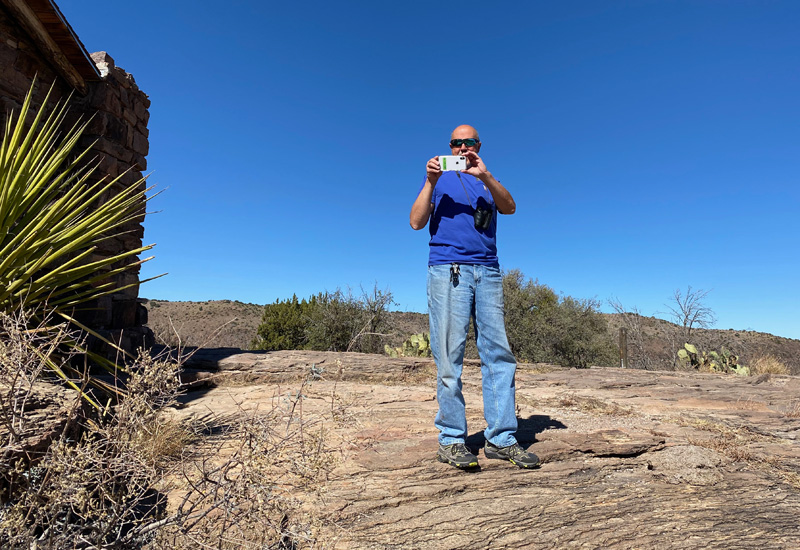
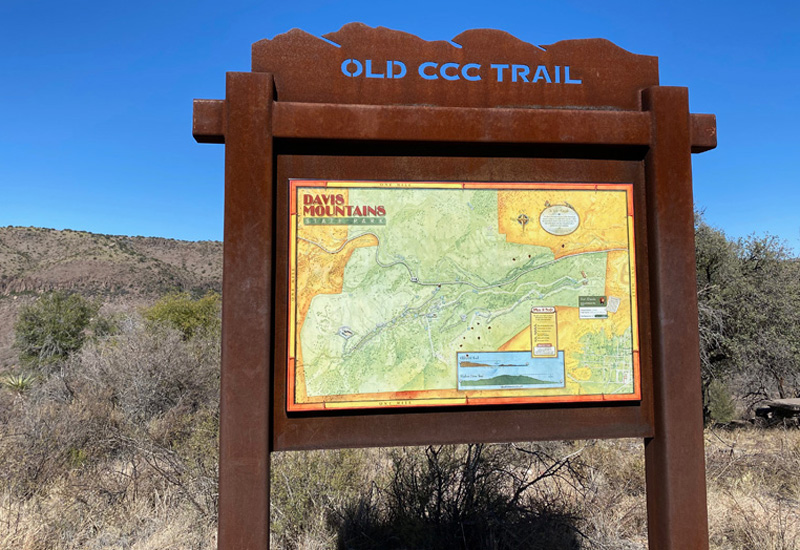







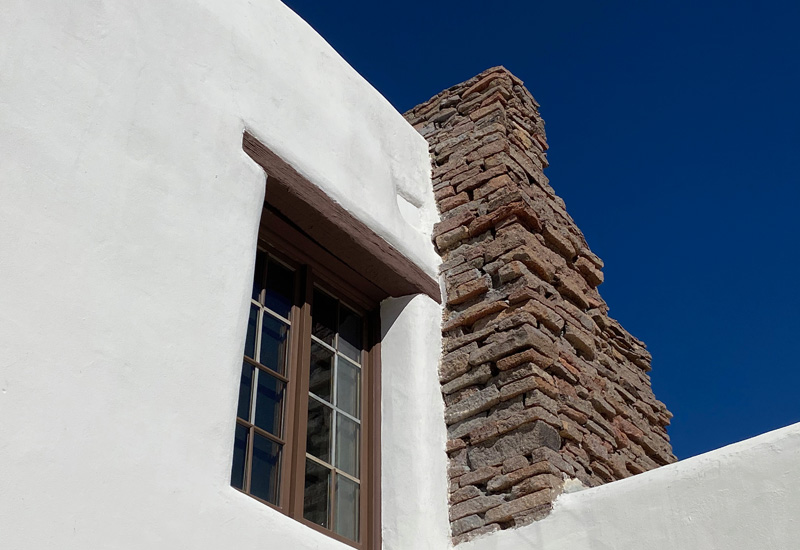



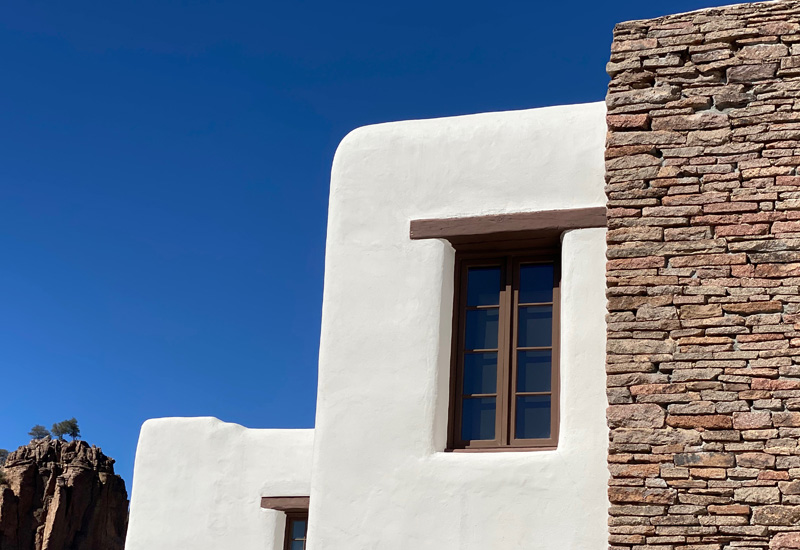


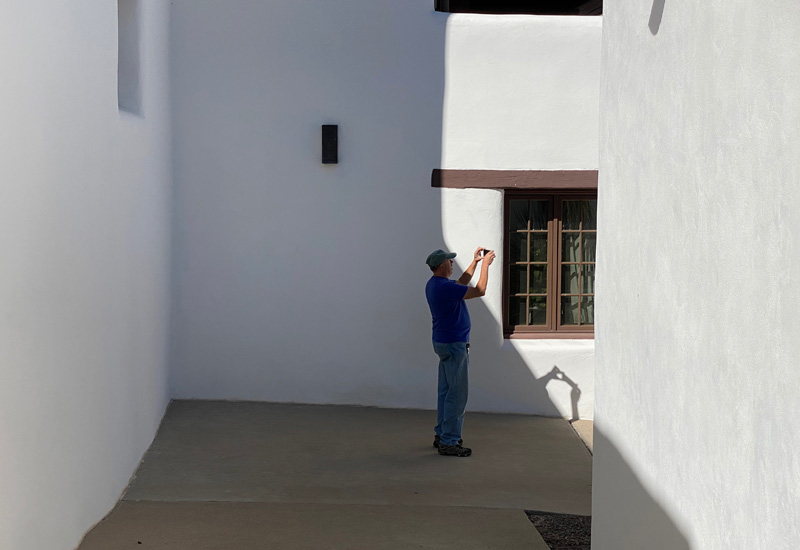







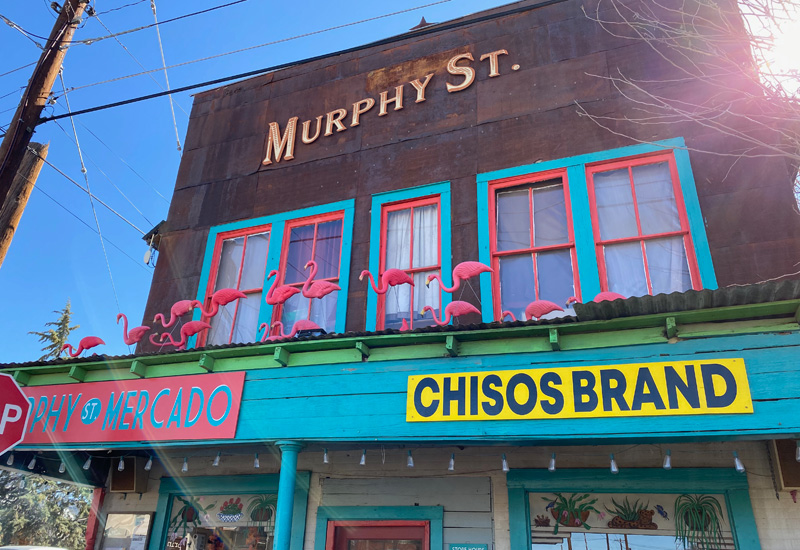


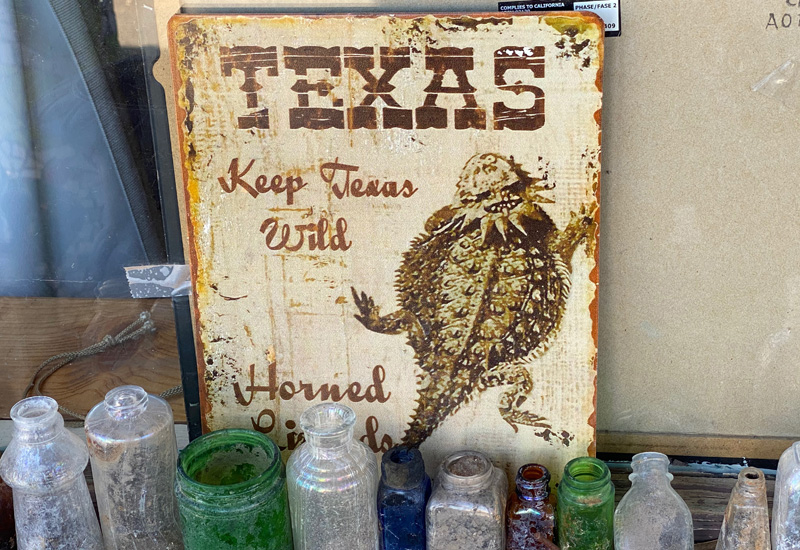




















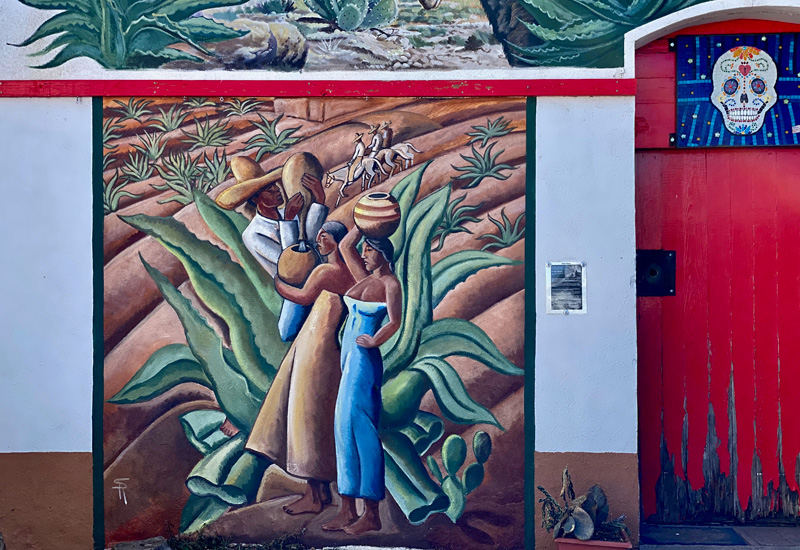


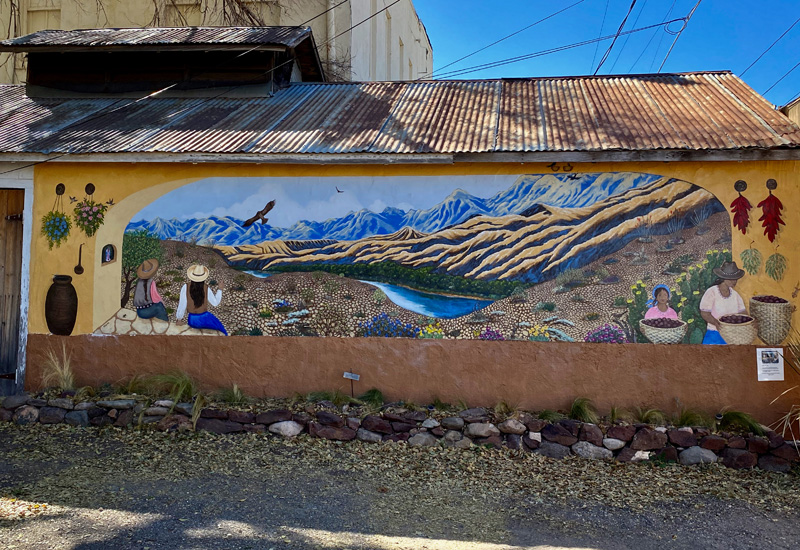




















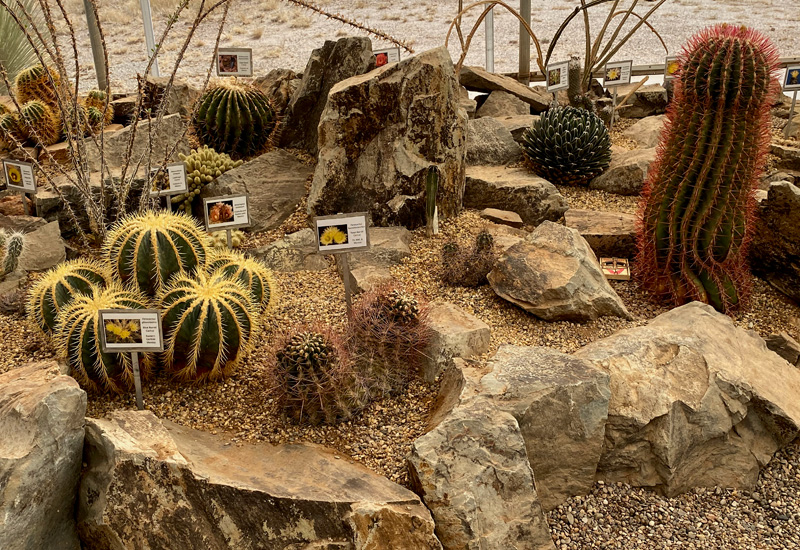






The spiral staircase goes where exactly? Beautiful as usual. Still love the white lodge contrast.
Hi Stacie! The idea behind the spiral staircase (which I think was part of the CCC building?) is to give you a view from a higher vantage point… a lookout tower of sorts! I went up there. It was a decent view… not great. I agree with you about the white lodge contrast against the deep blue sky and green foliage. Gorgeous! xoxo
Hi Gary and Teresa, There are some very cool things you have visited or done: the observatory, the state park (beautiful and arid) and FUNKY Alpine! We are having a sunny, cold windy day. Talked with Meigs yesterday who had a terrific story to share about something very special which Paul did. I’m sure you’ll hear about it.
lovings, Carol & Charlie
Hi Carol! Lovely to hear from you! You would have LOVED Alpine. Your kind of artsy town! Stay safe with that storm headed your way tonight and tomorrow! We did talk to Meigs over the weekend and heard the story. Such a wonderful thing that Paul (and Meigs) did for their friends! They are the best! ♥️